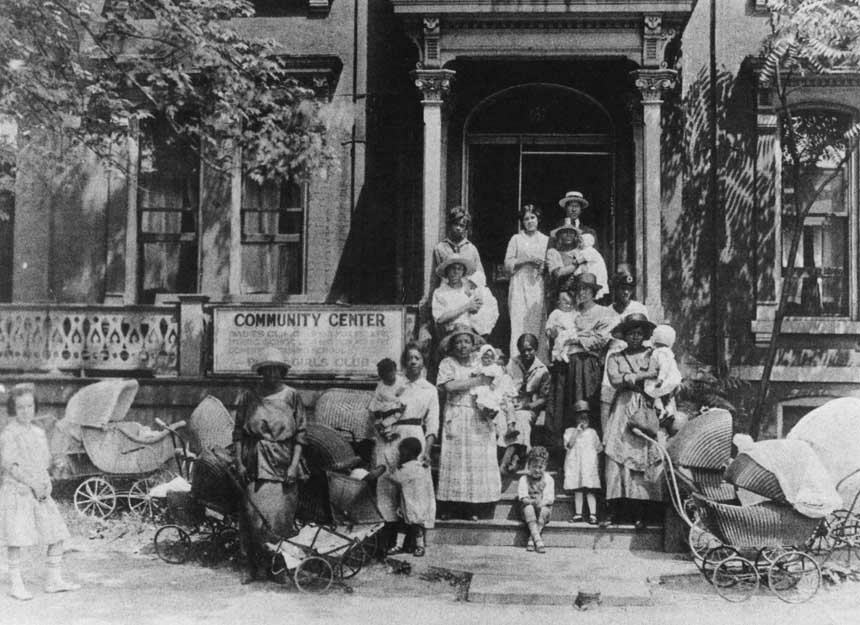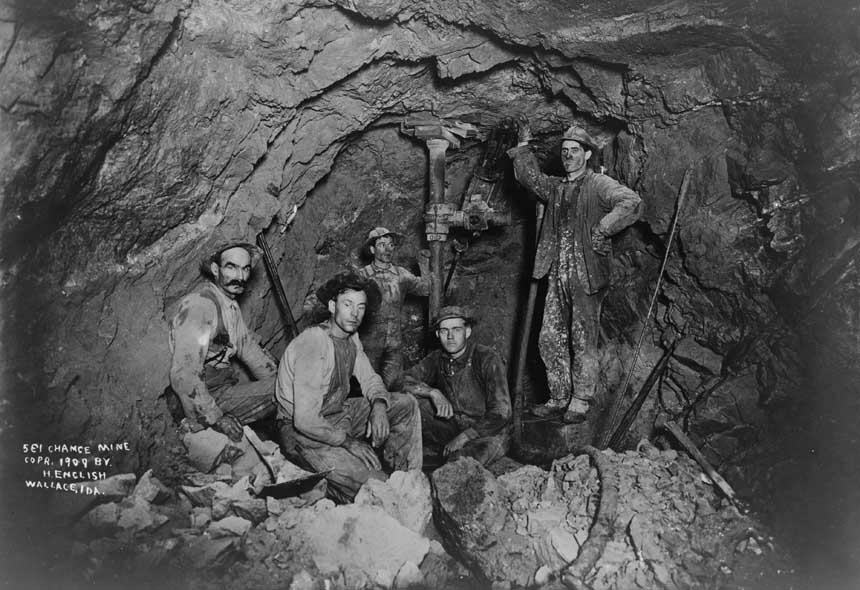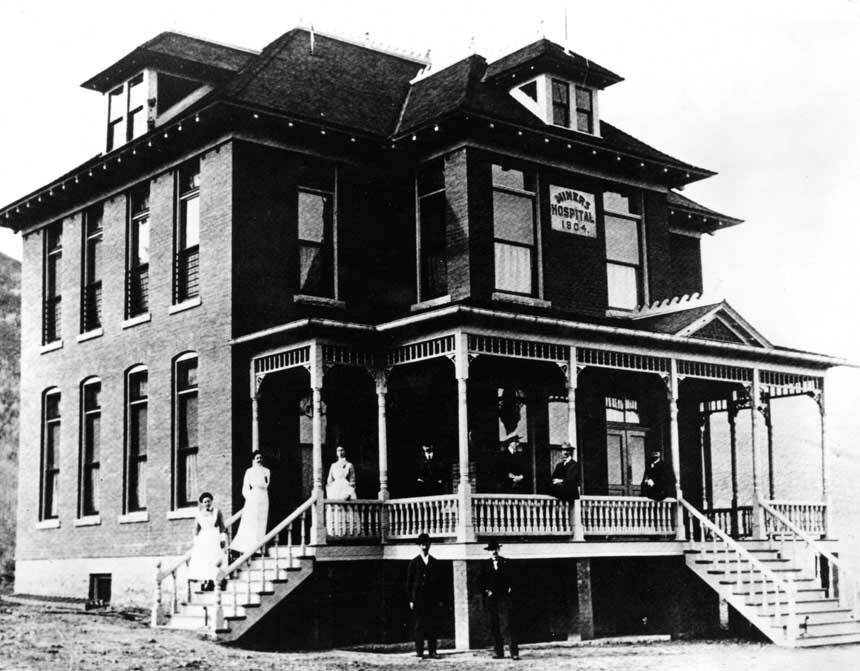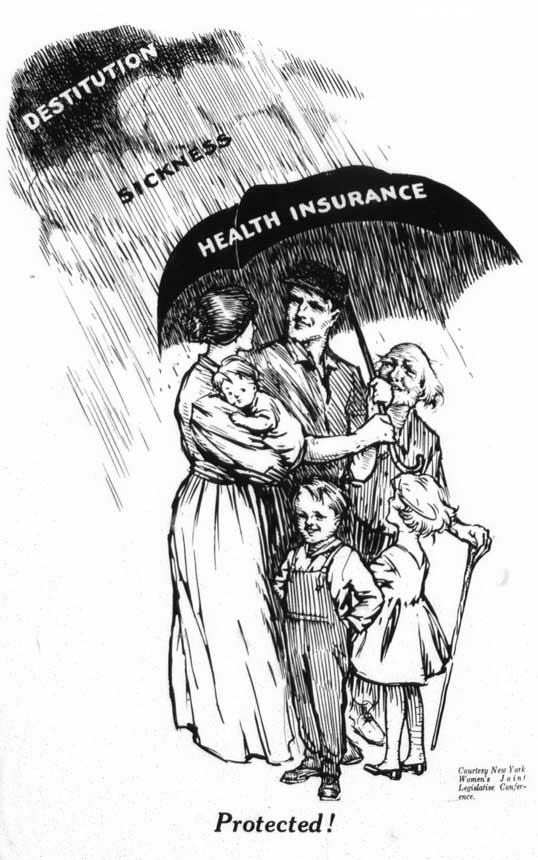Early in the 20th century, rapid industrialization, new waves of immigration, and growing labor unrest made the health of workers and the poor a matter of national concern.
Working people protested dangerous and unhealthy conditions, started worker-owned clinics and hospitals, and advocated for health insurance coverage. African Americans, excluded from mainstream medical care, also created their own health care institutions in the face of segregation.
The Urban League, a civil rights organization, co-sponsored this well-baby clinic to combat high infant mortality in African American neighborhoods, Detroit, MI, 1919
Courtesy University of Michigan-Bentley Historical Library
African Americans suffered disproportionately high rates of infant and maternal mortality, disease, and malnutrition. Hospitals were segregated by race or absent altogether from black neighborhoods and rural areas. Organizations like the Urban League, founded in 1918, launched campaigns for public health education and medical services in African American communities.
Interns and nurses at Provident Hospital and Training School, Chicago, 1922
Courtesy National Library of Medicine
Most hospitals did not allow African American physicians to practice in them, and many refused to treat black patients. Starting in the late 19th century, African American physicians and community members founded hundreds of black community hospitals across the nation, including Chicago’s Provident Hospital and Training School in 1891.
Miners in Chance Mine, possibly in the Coeur d’Alene region of Idaho, ca. 1909
Courtesy Library of Congress
The physical dangers and long-term health hazards of mining made medical care an urgent issue for workers in this industry.
Park City Miners’ Hospital, Park City, UT, early 20th century
Used by permission, Utah State Historical Society
Miners’ unions, whose members had high rates of accidents and disease due to their dangerous jobs, opened more than 20 hospitals in the western United States between 1890 and 1925.
Demonstration and mourning for the victims of the Triangle Shirtwaist Factory fire, New York, 1911
Courtesy National Archives and Records Administration
Following the Triangle Shirtwaist Factory Fire in 1911 that killed 143 workers, mostly young immigrant women, New York City’s garment unions and their supporters rose in protest. Their actions led to new laws regulating health and safety conditions in workplaces.
-
Pauline Newman, a Lithuanian immigrant, was a garment worker and union organizer before becoming director of the International Ladies’ Garment Workers’ medical clinic in New York City. Photo ca. 1910
Courtesy Kheel Center, Cornell University
Health was a major concern of industrial workers who toiled in dangerous and unhealthy conditions. In the absence of universal health protection, some labor unions developed worker-run medical facilities, including hospitals and clinics.
“Protected,” American Labor Legislation Review, 1919
Courtesy National Library of Medicine
This editorial cartoon supports compulsory health insurance to protect workers from losing their livelihoods due to sickness. The campaign for insurance lasted from 1915 until 1920, when it was defeated by opposition from business and the medical profession.









